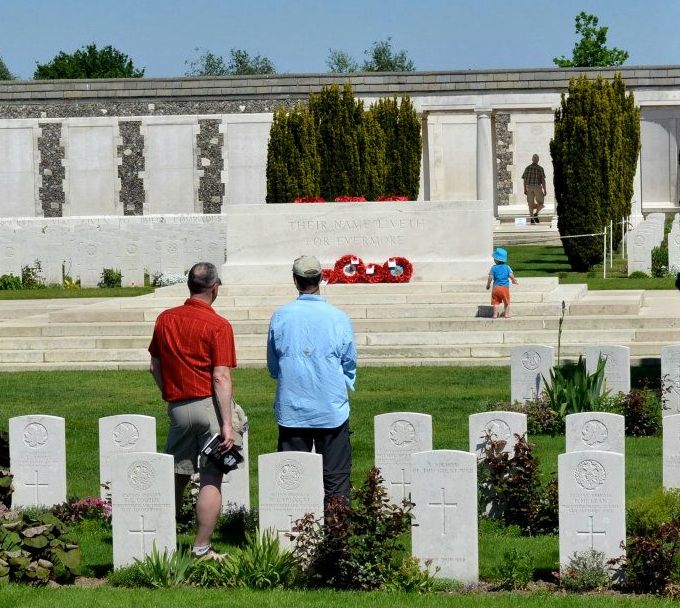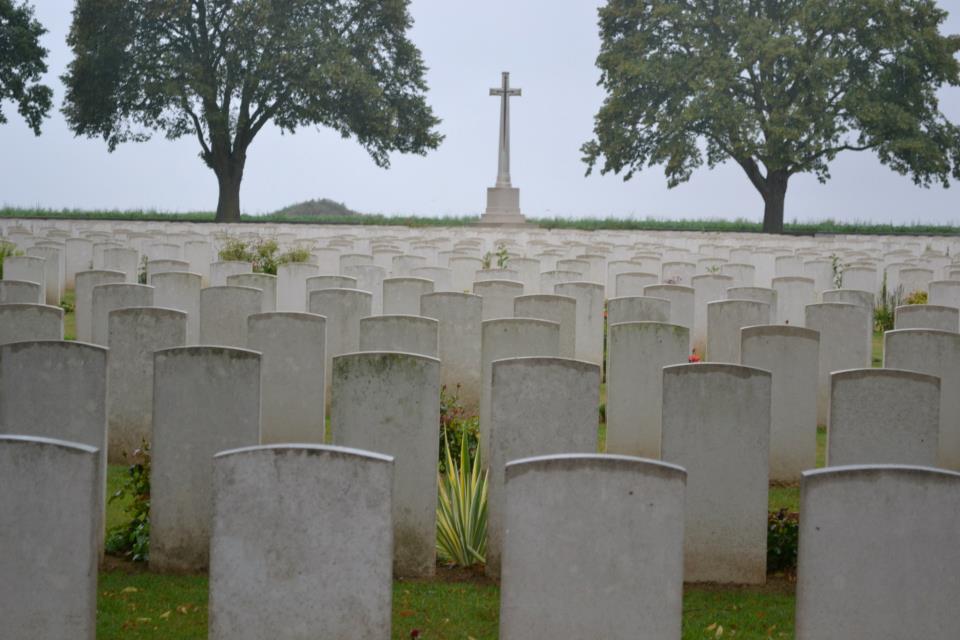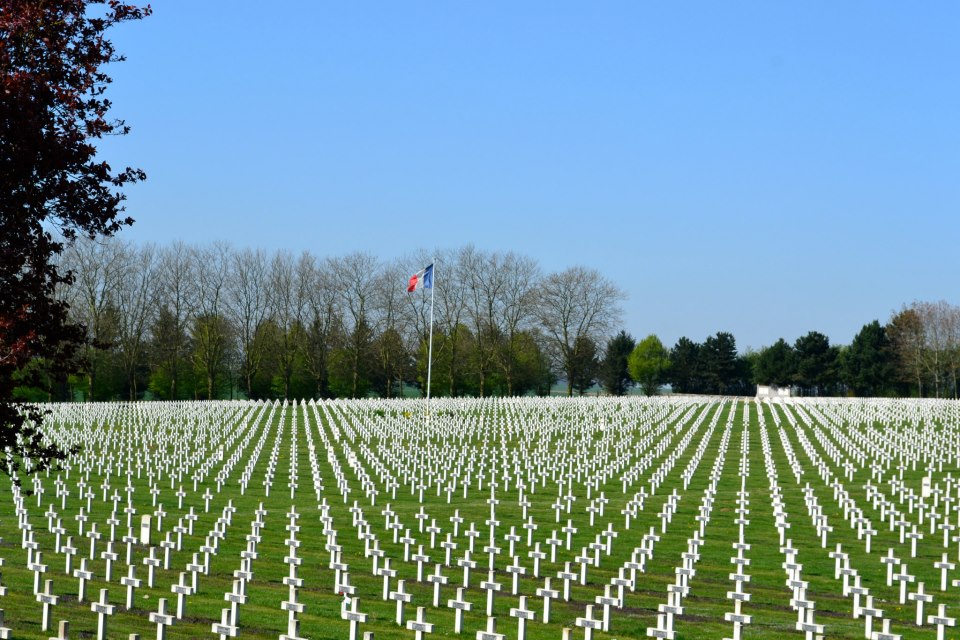As Dave and I curate photos for a Gunner Tour book, I am suddenly struck by just how many flower photos I have taken while on the Return To Vimy 2017 tour. An avid gardener, the landscaping provided emotional relief for me with the heaviness I felt, listening to the stories of the fallen. The cemeteries we visit include hospital cemeteries, battlefield cemeteries and concentration cemeteries. The latter, are where remains were brought from smaller cemeteries, to one large area – these include Beny-Sur-Mer and Tyne Cot. One of the most beautiful cemeteries we visited, in my opinion, was Adanac Cemetery (Canada spelled backwards), at the Somme. This tour was my first visit here. My experience was influenced by its beautiful, simple design - one colour of flower within the symmetry of the repeated gravestones. The current gardeners, hired by the Commonwealth War Graves Commission, choose flowers and landscaping for each season ensuring that something is always in bloom. I often thought about the designers of the commonwealth graveyards as I wandered about. For Adanac Cemetery, this was Sir Herbert Baker, who also designed Tyne Cot. He was one of the two principle architects of the First World War sites. All of his cemeteries were thematically based on reflecting “an English country garden”. The flowers are a lasting tribute to the men and women who remain here and welcome beauty to to those who visit them.
Their Name Liveth For Evermore
Every Commonwealth war graves cemetery of a certain size has a stone of remembrance with Rudyard Kipling's words - Their Name Liveth For Evermore. Every graveyard has its sombre beauty whether there are 24 graves, in Jeruselum Commonweath Cemetery, Normandy or the overwhelming 11,000 in Tyne Cot Commonwealth Cemetery in Belgium. The gravestones face towards the front line of their respective conflict. When we stand in remembrance at these locations it can be emotional and knowing the narrative of the battle, the dates, the military units' names, or the individual soldier's story can help frame the experience. When we visit their final resting place, it is a way to make sure that they are always remembered.








